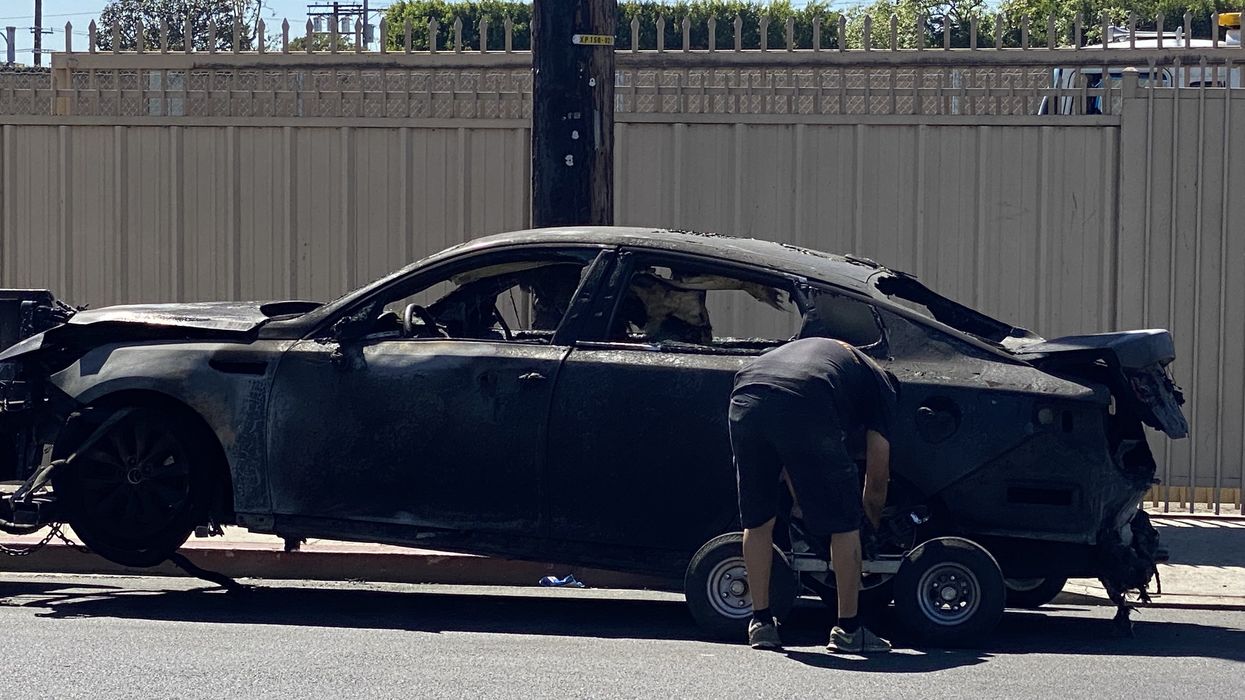
Matt Himes

Achieving automotive expertise one fender-bender at a time
My mother-in-law recently borrowed our Honda Odyssey. She returned it a day later having sideswiped another motorist while changing lanes on the 405.
Nobody was hurt, thank God, and the damage was mainly cosmetic. My mother-in-law was extremely apologetic. I was mostly relieved that none of it was my fault.
I reassured her that her chest pains were just a trauma response to having her texting interrupted by the untimely appearance of my rear bumper. The paramedics she insisted on summoning said something similar.
It was my fault last year, when I gouged a huge, jagged gash in the sliding passenger-side door. My 1989 Toyota Land Cruiser had refused to start again. My portable jump-starter was too weak to restart it. I had jumper cables, but the Toyota was parked next to my wife’s 2016 Tesla Model X.
I briefly considered calling AAA in a moment of weakness and self-doubt. The moment passed quickly.
The Honda was parked just behind the Tesla, at the bottom of our short, gently sloping gravel driveway. I had merely to put the Toyota in neutral, release the emergency brake, and keep it steady as it slowly rolled a few feet downhill until it was parallel with the Honda.
It turned out the Toyota needed a little push to get going. That would be easy enough to do; surely I was agile enough to jump back into the driver’s seat before the truck really picked up steam. And I was, although getting the door closed was another matter. It snagged on the Honda. The Land Cruiser’s sheer solidity had always impressed me; now, I watched as it made a deep impression on my daily driver. They really don’t make them like they used to.
The Honda had undergone major repairs just months before. I was in stop-and-start traffic on Sunset when a 30-something woman in a VW Beetle rear-ended me with enough force that her airbag deployed. We were both unharmed, although she seemed convinced she was about to die from a massive heart attack. It took me 10 minutes to coax her out of her car (now causing a significant bottleneck) and to the relative safety of the sidewalk, during which time I studied her Ms. Pac Man seat covers while passing commuters heaped abuse on me.
I reassured her that her chest pains were just a trauma response to having her texting interrupted by the untimely appearance of my rear bumper. The paramedics she insisted on summoning said something similar. After another half hour of emotional labor (I see you, ladies), I managed to extract her insurance information and interest her in mine.
The damage was extensive, and supply chain issues kept my car in the shop for months waiting for parts. So, I reluctantly started borrowing the Tesla. There are many everyday experiences that cause me disproportionate irritation; somehow Los Angeles traffic isn’t one of them.
Except when I’m piloting that Tesla. Something about the cryptic “error messages” that pop up on its big display screen makes me feel as though I’m trying to batch print mailing labels or import Excel macros rather than get the kids to soccer practice. I also don’t like that they hide the motor. Pop the hood and instead of the expected hoses and valves and other sundry parts, you’re confronted with the same eerie blank of a Ken doll’s crotch.
Compare that to the Land Cruiser, which I also started driving more regularly. It lacks heat or air, is finicky about starting, and gets abysmal gas mileage, but its innards are on display for all to see. I don’t know what they do, but it’s nice to know I could learn.
And I have learned a little. Owning an old car inducts you into an extensive online society of others who own that same car. It was a fellow FJ2 owner who showed me how to remove and clean the idle air control valve. When that didn’t fix my truck’s recent tendency to stall at stop lights, another compatriot taught me to patch any cracks in the intake hose with duct tape. That did do the trick.
A modest win, to be sure, but enough to make me feel that I’m part of what Matthew B. Crawford calls the internal combustion engine’s “singular story of engineering progress.” As Crawford writes in his book Why We Drive:
[The internal combustion engine has] been the beneficiary of the most sustained and widely dispersed project of practical experimentation in human history, the ultimate wiki. Today’s state of the art is the result of more than a century of back-and-forth between trained engineers and shade tree mechanics, illicit street racers and environmental regulators, high-dollar motor sports and cost-oriented automakers.
Wanting to go deeper has led me to Alex Muir’s elegant "How a Car Works." What started as a collection of illustrated articles (still available for free on the website) has evolved into something much more comprehensive, with Muir taking apart a Mazda MX5 Miata, modelling it all in 3D, and then reassembling it.
The resulting 14-hour video course, which Muir currently offers at $25 for “lifetime access,” patiently takes you through every facet of automotive engineering. “Any sufficiently advanced technology is indistinguishable from magic,” said Arthur C. Clarke, which explains why those modern-day shamans known as car mechanics are so adept at making our money disappear. It can’t hurt to pick up a few tricks of our own.